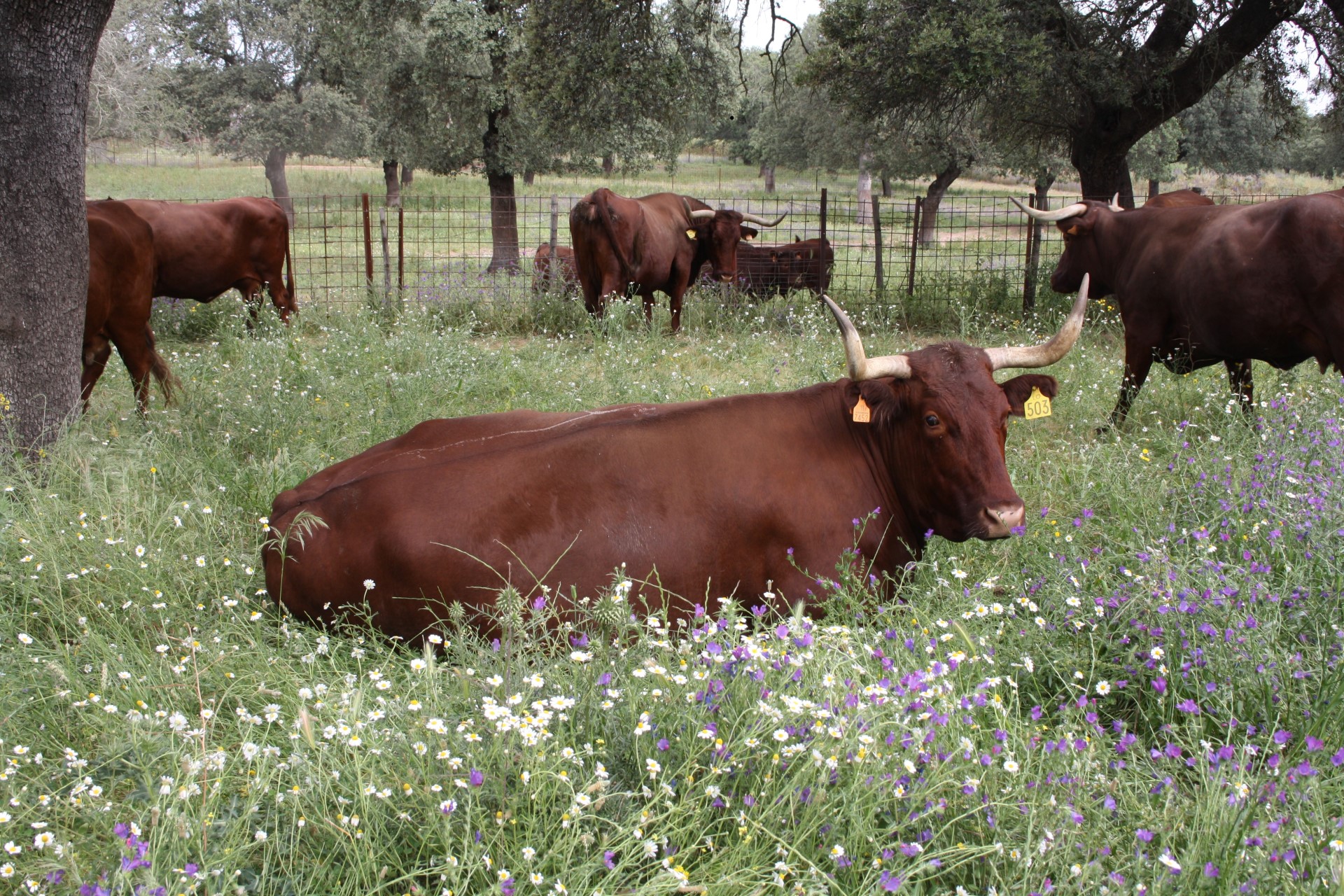
Retinta cattle
 General information
General information
The Retinta breed is considered to be an autochthonous breed from the Southwest of Spain. 95% of the Retinta cattle heads are found in the provinces of Andalusia and Extremadura, making it the main autochthonous breed of cattle of the Spanish dryland areas.
This breed belongs to the group of Promoted Autochthonous Breeds, which are mainly used for meat production. The national census registers over 200,000 reproductive females of this breed. The census managed by the Ministry of the Environment and Rural Matters (year 2017) recorded 887,102 heads of Retinta breed in Extremadura, of which 572,529 were in the Caceres province and 314,573 in the Badajoz province.
 Extensive livestock farming in dehesas
Extensive livestock farming in dehesas
The natural habitat of this breed is the dehesa, an ecosystem where the Retinta breed plays an essential role in terms of maintenance and sustainability. This breed is very rustic and well adapted to the hard agricultural and climatic conditions of the area where it is reared, as it is an area of dramatic contrasts, i.e. high temperatures in the summer and extreme cold in the winter. Such rusticity allows this breed to travel large distances in search of pastures, which make it highly resistant to parasite-causing disease. The females also have a high maternal character. This breed is traditionally reared in extensive farming systems, where the cattle shares pasturelands with other autochthonous species, mainly Merina sheep, Iberian pigs and Pure Spanish breed horses.
 Retinta breed
Retinta breed
The most common presentation of the Retinta meat is the meat of the yearling, which is a baby cow slaughtered at the age of 12 to 14 months. The commercialisation of the meat derived from these animals is certified by the Quality Label "Retinta Meat” issued by the National Association of Retinta Selected Cattle Breeders (ACRE, for its abbreviation in Spanish). This association monitors the process of the meat from its origin to the time it goes to the market.
 CICYTEX’s lines of research
CICYTEX’s lines of research
Amongst the lines of research conducted at CICYTEX we must mention the studies for the improvement of the reproduction indices, which imply the use of oestrous synchronisation schedules, artificial insemination, sexing studies, gestation ultrasonography, and the assessment of the studs in order to attain efficient reproduction management.
On the other hand, other lines of research focus on the analysis of the behaviour of Retinta breed that is fed on fodder (ACRE).
 Nutrition
Nutrition
Research line for the improvement of the immune system in cattle by incorporating different food supplements (immunonutrition) circumstances that will allow obtaining animals with the capacity to fight against diseases (Immunoactives). As well as determining the influence of the parasite load on the aforementioned immune system.





